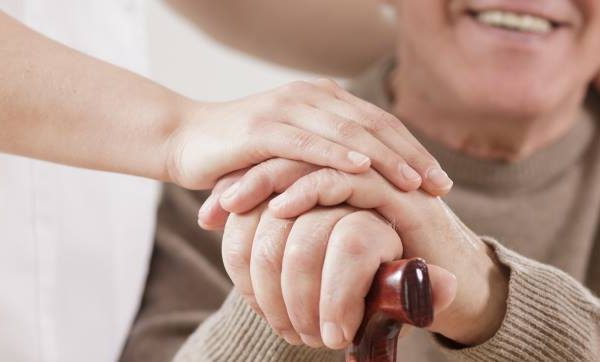Overflow incontinence accounts for approximately 10-15% of all incontinence cases. It is important to understand the main symptoms of overflow incontinence so you can determine whether you have the condition and how you can treat it.
Overflow incontinence occurs when a person’s bladder cannot fully empty. The condition is easy to understand if you imagine putting pressure on an overfull hot water bottle. For people suffering from overflow incontinence, post void residual volume exceeds 200ml. In comparison, normal PVR is usually 50 ml or less. As incontinence specialist Tamara L Callahan asserts, “patients with overflow incontinence may present with a wide variety of symptoms including frequent or constant urinary dribbling, along with symptoms of stress and urge incontinence”. In men, the condition is usually caused by an enlarged prostate gland, cancer of the prostate or a narrowing of the urethra. It is even estimated that by age 75, between 10 and 25 percent of men require intervention for problems caused by benign prostatic hypertrophy. Men with enlarged prostates often complain of a urine stream that is very weak, difficulties in starting to pass urine then difficulties stopping the dribbling. In women, overflow incontinence is caused by weak bladder muscles, a blocked urethra, pelvic organ prolapse, a scar tissue or kidney stones. However, autonomic neuropathy from Diabetes or other diseases can also decrease neural signals from the bladder and cause problems in your urine flow.
The following symptoms are common in those with overflow incontinence:
You have a constant feeling of fullness in the bladder
This is the most significant symptom of overflow incontinence, which distinguishes it from the other types of incontinence. Overflow incontinence will give you a feeling that your bladder is constantly full. The Bladder and Bowel Community defines Overflow Incontinence as a condition where the bladder “never empties properly and fills up more quickly due to the residual volume.” With Overflow Incontinence, you often may not even notice that you are dribbling urine during a leak. This can cause many embarrassing leaks in public. Perhaps the most irritating part of Overflow Incontinence is that you may not even have the urge to urinate before having an accident. Like any type of incontinence, Overflow Incontinence can therefore have a significant impact on your life, particularly when you are uneducated about the condition. One woman who blogged about her experience with Overflow Incontinence after a stroke and mismanagement in her post-partum care asserts, “it was about 36 hours before it occurred to me that I hadn’t peed since delivery willingly”. She remembers, “I was horrified that no one had warned me that every time I stood up I would completely wet myself, and have no urge to pee at all”. Paying attention to when and where you have problems can help you to work out whether it is overflow incontinence that you are suffering from.

You have frequent Bladder Infections
Urine can stay in the bladder for long periods of time if you are unable to fully empty it. As a consequence, this can often cause bladder infections. Difficulty emptying the bladder may also cause bladder or kidney infections, as urine that stays in the bladder for long periods of time creates an ideal environment for bacteria to grow in. Someone with a UTI may experience a burning sensation during urination or notice blood in their urine. Urine may also have a strong odour or be dark in colour. Men with UTIs may experience rectal pain, while women with UTIs may have back or pelvic pain. In some cases where bladder emptying is not treated, urine can go back to the kidneys and cause hydronephrosis and damage the kidney function.
You have a leakage of urine while sleeping or wake up with the need to urinate
As it is hard to get a strong flow of urine, you might find yourself going to the bathroom much more often. This means you may even wet the bed during the night. This condition is often known as Nocturia. While most adults are able to sleep 6-8 hours a night, people with Nocturia may find that they wake up several times during the night to go the bathroom. This can negatively affect a person’s quality of life, interrupting sleep and causing fatigue and depression. Interestingly, men are significantly more likely to be affected by Nocturia than women are, with the condition being more prevalent in individuals over 60 years of age.

You have difficulty starting voiding when you feel the urge to urinate
When you have overflow incontinence, you may have difficulty starting to pass water. A person with this difficulty may find voiding to become abnormally slow and intermittent. This occurs when the normal flow of urine is blocked. It is vital that you pay attention to this problem and do not ignore it to prevent further problems from arising. Common problems caused by difficulty voiding include acute retention of urine or the bladder sustaining over-stretch injury. The more urine there is retained in the bladder and the longer the retention persists, the longer it will take for the bladder to recover from these problems. You should also be aware that voiding difficulties can often be caused by factors included drugs, nerve damage, childbirth, surgery and prolapse.
Your urine stream stops and restarts during urination
A distended, often hypotonic bladder is typical of patients with overflow incontinence. Urine flow that starts and stops is also called urinary intermittency. The underlying problem of this is inability of the bladder muscle to contract efficiently, causing the urine stream to randomly stop and restart. If your urine stream suddenly stops and restarts during urination, you should not ignore this. It is common for the muscles to involuntarily tense up and make the urine flow stop. Applying heat to or massaging the lower abdomen may help relax the bladder and the muscles around it and aid urination. You may also find that Kegel exercises help with a poor flow of urine by strengthening the muscles around the urinary tract, giving you more control over your bladder.
Finding treatment for Overflow Incontinence
Once you identify the symptoms of Overflow Incontinence, it is important to talk to your Doctor to find the underlying cause of your Overflow Incontinence. The ideal treatment method for you ultimately depends on the reason why you have developed Overflow Incontinence. You should therefore firstly ask your Doctor about the recommended treatment for you.
If you do not feel comfortable about having surgery, a popular treatment method for overflow incontinence is the insertion of a urethral catheter. A catheter is a tube made out of latex or silicone that is put into your bladder with the function of draining the urine out. This is inserted either through the waterpipe or through the lower part of the tummy. The outside part of the catheter can also be connected to a valve instead of a bag, meaning the bladder can fill as it would normally. The bags and valves should be changed every week. The catheter should be changed at least every 3 months. However, self-catheterisation is often a preferable alternative to a permanent, long-term catheter as they are less invasive. You should ask your Doctor or Nurse to teach you how to self-catheterize. This technique of catheterisation is simple, safe and easily learnt. If you do have problems, your district nurse or GP can usually resolve the issues for you. Another option for the treatment of an enlarged prostate is the use of a type of medication called an alpha-adrenergic blocker to relax the muscle at the base of the urethra. This allows urine to flow much more easily.
Double voiding is another method of treatment that can strengthen and train your bladder muscles. To do this exercise, simply wait a few minutes after urinating and try to go again. This can help train your bladder to empty completely. If the cause of your overflow incontinence is weak pelvic floor muscles, pelvic floor exercises are also effective in strengthening these muscles. To do this, simply try and stop your flow of urine mid-stream to find the pelvic floor muscles. The muscles you are tightening in this exercise are your pelvic floor muscles. You should then contract the pelvic floor muscles around your bladder for around 10 seconds and then relax and repeat. You can find out more about the benefits of Kegel exercises here.
Overflow Incontinence does not have to be stressful to manage if you are provided with the right treatment and products. If you are suffering from Overflow Incontinence, it is important to be pro-active with the ideal protective products for you. Read our guide to the different urinary incontinence products you can choose from.

Originally posted 2017-12-21 16:52:41.












Leave a Reply